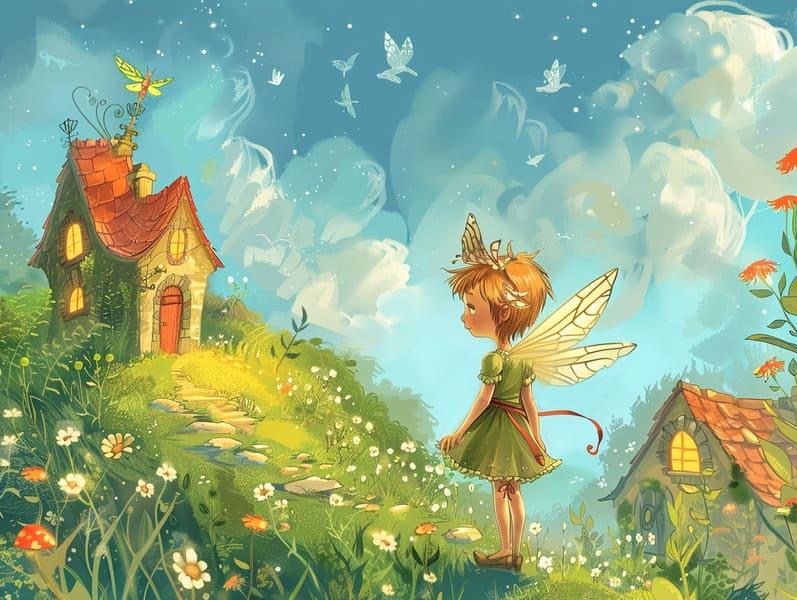Tracing the Heritage of Classic Fairy Tales and Their Unfading Grace.
Tracing the Heritage of Classic Fairy Tales and Their Unfading Grace.
Blog Article

Historical fairy tales have timeless appeal. These stories have been spoken from one generation to the next millennia before they were ever written down. They originated from a variety of societies, including Indigenous traditions. They were initially narrated among elders, often carrying themes and messages pertaining to the societal norms and beliefs of the time.
Jacob and Wilhelm Grimm, Jacob and Wilhelm (the Grimm brothers), were among the first to compile many of these beloved narratives. Their collection, "Grimm's Children's Stories," included tales like "Ashenputtel," "Little Brother and Little Sister," and "Little Snow White," which have since become mainstays in the world of traditional fairy tales. Similarly, Hans Andersen's delightful stories, such as "The Mermaid's Tale," and "The Duckling that Could," have stolen hearts worldwide, guaranteeing their place in the pantheon of famous fairy tales.
Despite their ancient origins, these tales remain as meaningful as ever, especially as children's night stories. These delightful tales are now available in different formats, including vividly illustrated books, enchanting animations, and web-based fairy tales.
Their persistent charm can be linked to several charming aspects:
Valuable Lessons: Old fairy tales often teach important moral lessons. Tales like "The Story of the Boy Who Cried Wolf" teach the merit of honesty, while "The Hare and the Tortoise" show the values of perseverance and unassuming nature. These stories offer young ones clear distinctions between moral and immoral, forming their moral compass in a mild yet meaningful way.
Compassion and Knowledge: Old fairy tales frequently present figures facing challenges and struggles, prompting young readers to empathize with their struggles and champion their triumphs. For instance, "The Story of Beauty and the Beast" reveals the value of looking beyond appearances to know the real character of a individual, enhancing kindness and perception.
Cultural Insights: Many fairy tales are imbued with the cultural contexts from which they came. Reading these narratives can provide enlightening views into different cultures, advancing a sense of world appreciation and acknowledgment.
Imagination and Innovation: The supernatural elements in timeless fairy tales—enchanted objects—promote children’s creativity. These narratives carry readers to mythical realms, kindling imaginative thinking and a sense of excitement that stays a lifetime.
Traditional fairy tales are not only charming but also illuminating. They work as captivating tools in developing various mental and emotional abilities in the young. When ancient fairy tales are voiced, they nurture language acquisition by teaching new lexicon and complicated sentence structures. This practice also advances listening abilities and attentiveness, as children concentrate deeply, eager to see what happens next.
Furthermore, contemplating the themes and characters of fairy tales can foster intellectual skills and thought processes. Young ones learn to recognize patterns, make predictions, and make sense of cause and effect. These examinations also assist kids reveal their thoughts and feelings, nurturing their emotional intelligence.
In today’s electronic age, the existence of digital fairy tales has made these narratives more attainable than ever. Websites and apps share wide arrays of popular fairy tales that can be experienced or listened to anytime, anywhere. Fairy tales spoken are particularly widespread, extending an captivating way for children to take part in these charming tales. Narrated books and voiced videos guide characters and settings to life, often complemented by bewitching musical scores and instrumentals that amplify the story adventure.
The timeless allure of classic fairy tales lies in their ability to change to the present while keeping hold of their key morals. Contemporary reimaginings of these fairy tales often feature more varied figures and modern settings, making them accessible to today’s audience. However, the basic principles of gallantry, understanding, and lawfulness remain unchanged, continuing to appeal to children of all ages.
Ancient fairy tales also offer a sense of assurance and understanding. They present a systematic narrative with a apparent beginning, middle, and end, often closing with the termination of conflicts and the triumph of morality over wickedness. This predictability can be solacing for the young, making available a sense of unwaveringness in an dynamic world.
Traditional fairy tales continue to enthrall and instruct new generations, maintaining their charm and value in modern society. As nighttime stories for kids, they make accessible a perfect blend of captivation and insight, sustaining moral values, empathy, and creativity. The existence of online fairy tales and the likability of fairy tales spoken affirm that these old narratives remain available to new generations.
By maintaining and communicating these stories, we continue to venerate the rich tapestry of narrative artistry and cultural heritage. Whether you are exploring a colorful picture book, viewing a virtual collection, or listening through an narrated book, the charm of timeless fairy tales is always within reach. These stories point out of the continued strength of fairy tales and its ability to link us across time and space.
Even if you are delving into a colorful picture book, perusing a web-based collection, or hearing an audio story, the grace of children's fairy tales is always within reach.
These tales point out of the persistent power of tales and its ability to read more gather us across eras and regions, making a tie that fascinates and enlightens alike.